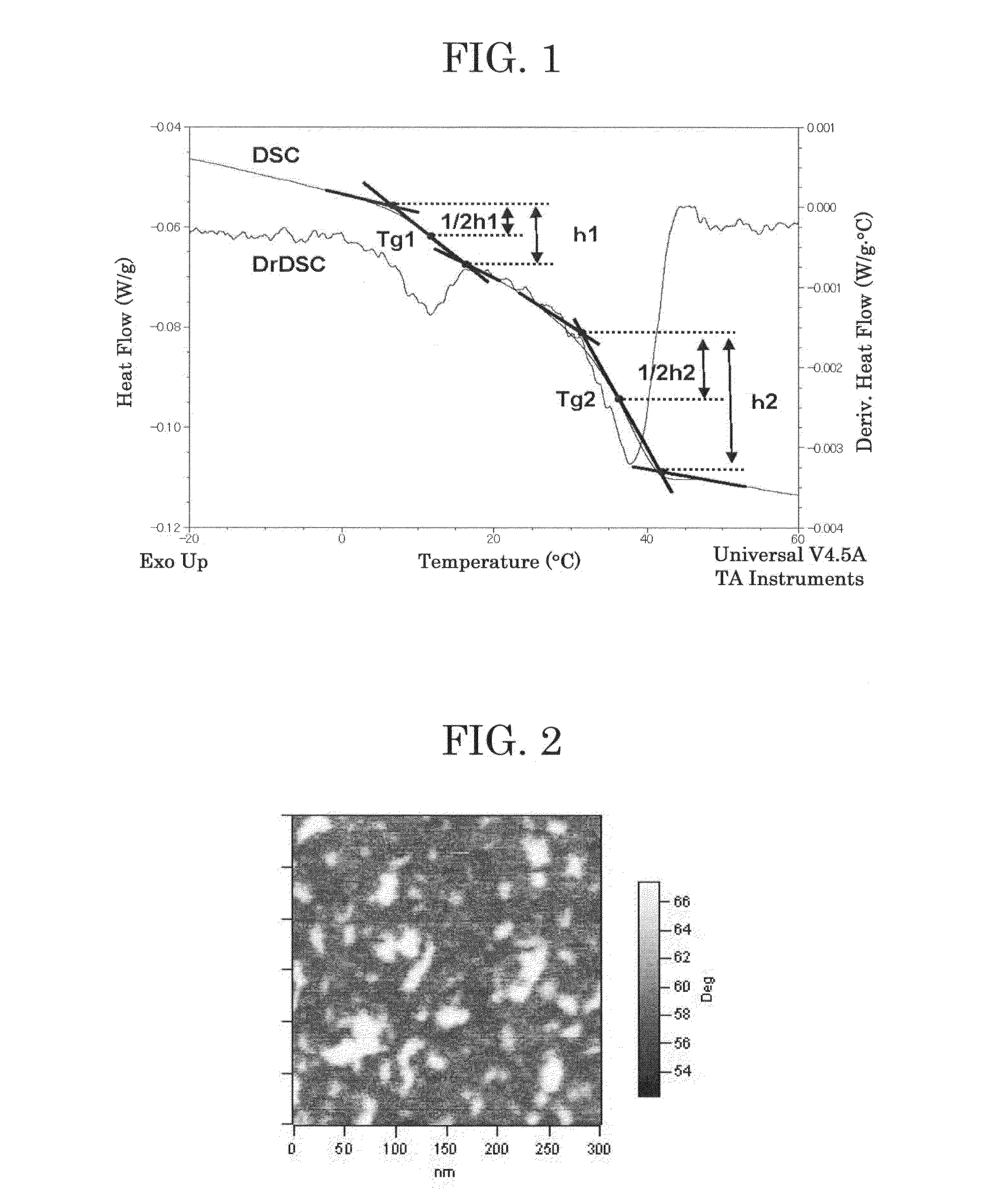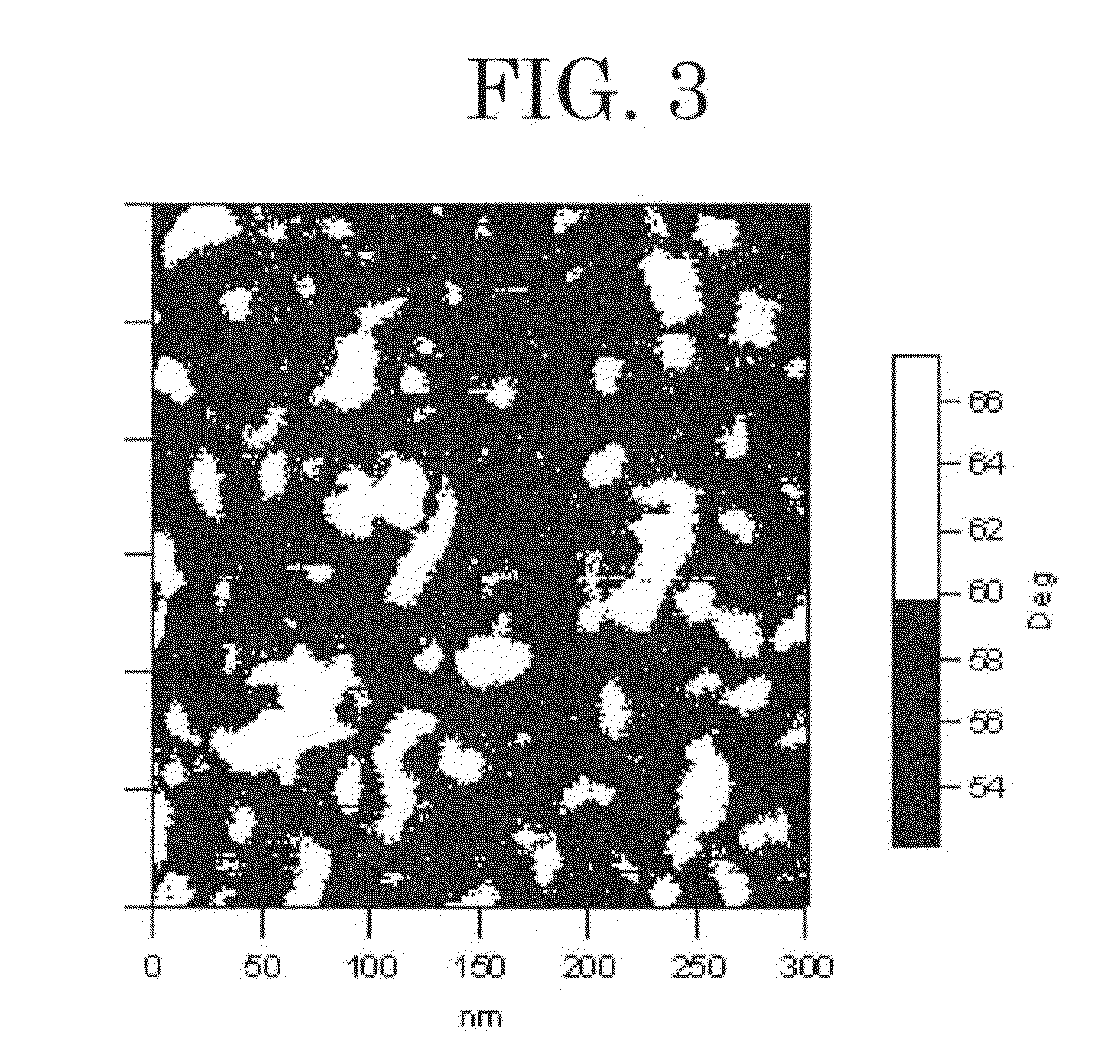Toner and developer
a technology applied in the field of toner and developer, can solve the problems of difficult to achieve the physical properties and thermal characteristics required for a toner, depletion of oil resources, global warming, etc., and achieve the effects of inhibiting the reduction of image density, excellent low temperature fixing ability, and heat resistant storage stability
- Summary
- Abstract
- Description
- Claims
- Application Information
AI Technical Summary
Benefits of technology
Problems solved by technology
Method used
Image
Examples
production example 1
Synthesis of First Binder Resin 1
[0229]A 300-mL reaction vessel equipped with a condenser, a stirrer and a nitrogen-introducing tube was charged with an alcohol component and acid components at a proportion (parts by mass) shown in Table 1 so that the total mass of the reagents became 250 g. In addition, titanium tetraisopropoxide (1,000 ppm relative to the resin components) was also added to the reaction vessel as a polymerizing catalyst. Under nitrogen flow, the resultant mixture was heated to 200° C. for about 4 hours and then heated to 230° C. for 2 hours, to thereby perform the reaction until no flow component was formed. Thereafter, the resultant was further reacted for 5 hours under the reduced pressure of 10 mmHg to 15 mmHg, to thereby obtain Initiator 1. The molecular weight and glass transition temperature of Initiator 1 are presented in Table 2.
[0230]Next, an autoclave reaction vessel equipped with a thermometer and a stirrer was charged with Initiator 1, followed by addi...
production example 2
Synthesis of First Binder Resin 2
[0231]Initiator 2 was obtained in the same manner as in Production Example 1, provided that the formulating amounts of the alcohol component and acid component of Initiator 1 were respectively changed as presented in Table 1.
[0232]The number average molecular weight Mn and glass transition temperature Tg of Initiator 2 are presented in Table 2.
[0233]First Binder Resin 2 was synthesized in the same manner as in Production Example 1, provided that Initiator 1 was replaced with Initiator 2. The number average molecular weight Mn, weight average molecular weight Mw, glass transition temperature Tg1 and Tg2, and ratio h1 / h2 of First Binder Resin 2 are presented in Table 3.
production example 3
Synthesis of First Binder Resin 3
[0234]Initiator 3 was obtained in the same manner as in Production Example 1, provided that the formulating amounts of the alcohol component and acid component of Initiator 1 were respectively changed as presented in Table 1.
[0235]The number average molecular weight Mn and glass transition temperature Tg of Initiator 3 are presented in Table 2.
[0236]Next, First Binder Resin 3 was synthesized in the same manner as in Production Example 1, provided that Initiator 3 was used and L-lactide and D-lactide were changed as depicted in Table 2. The number average molecular weight Mn, weight average molecular weight Mw, glass transition temperature Tg1 and Tg2, and ratio h1 / h2 of First Binder Resin 3 are presented in Table 3.
PUM
| Property | Measurement | Unit |
|---|---|---|
| Percent by mass | aaaaa | aaaaa |
| Percent by mass | aaaaa | aaaaa |
| Nanoscale particle size | aaaaa | aaaaa |
Abstract
Description
Claims
Application Information
 Login to View More
Login to View More - R&D
- Intellectual Property
- Life Sciences
- Materials
- Tech Scout
- Unparalleled Data Quality
- Higher Quality Content
- 60% Fewer Hallucinations
Browse by: Latest US Patents, China's latest patents, Technical Efficacy Thesaurus, Application Domain, Technology Topic, Popular Technical Reports.
© 2025 PatSnap. All rights reserved.Legal|Privacy policy|Modern Slavery Act Transparency Statement|Sitemap|About US| Contact US: help@patsnap.com


